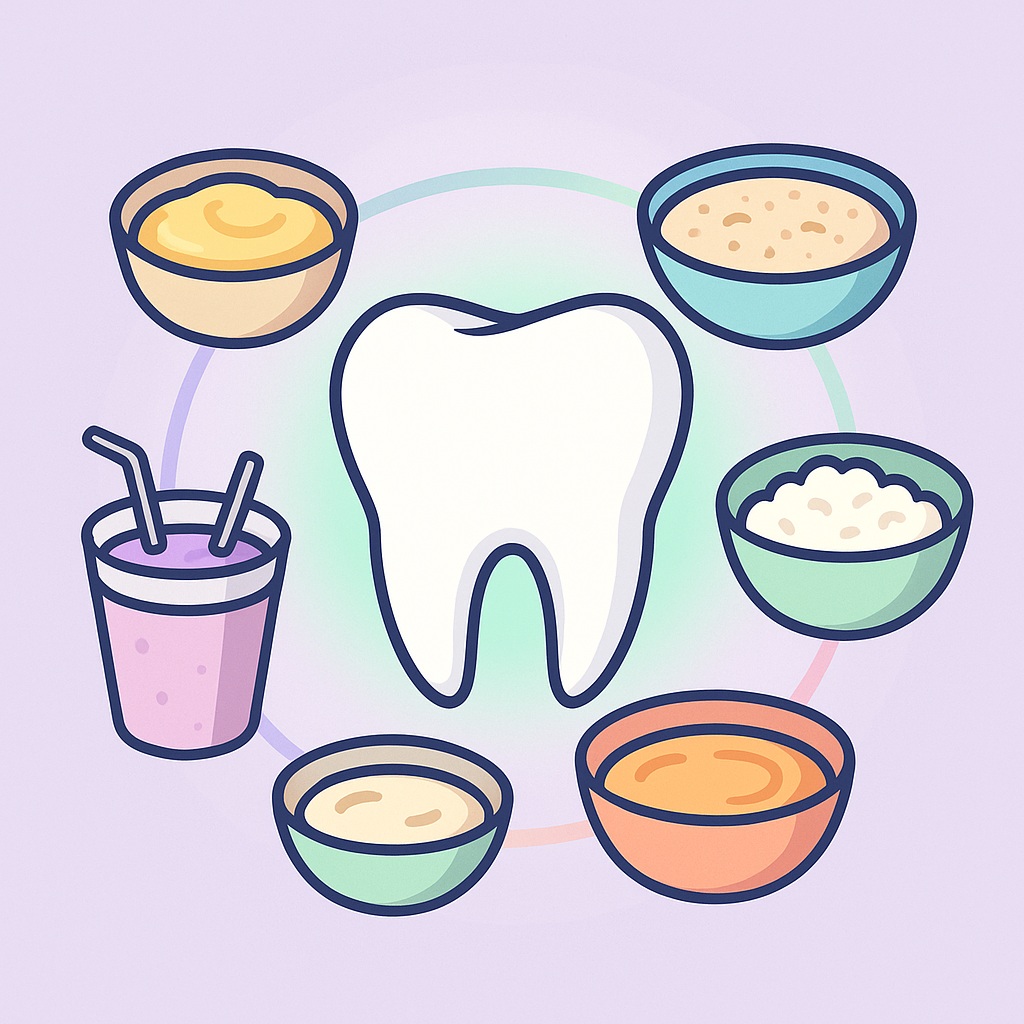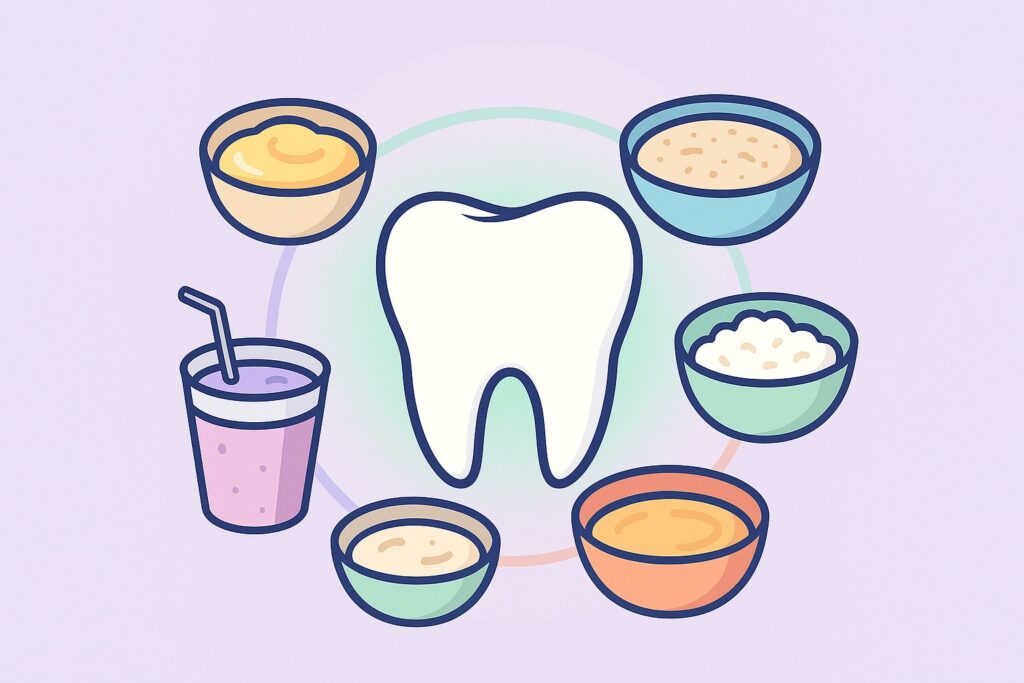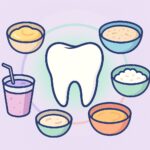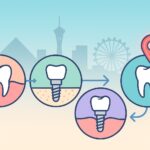Recovering from dental implant surgery requires more than just rest—it also demands careful attention to what you eat. Since the implant site is sensitive during the healing phase, the wrong foods can slow recovery or even cause complications. Soft foods reduce pressure on the surgical area, prevent irritation, and support healing by allowing you to maintain good nutrition without damaging the new implant. For the first few days to weeks post-surgery, sticking to a soft food diet is one of the simplest yet most effective ways to protect your investment and promote a smooth recovery.
Why Soft Foods Are Essential After Dental Implants
After dental implant surgery, your jawbone and gum tissues need time to heal and stabilize around the implant. During this critical period, eating soft foods helps minimize pressure and movement at the surgical site, reducing the risk of implant failure or delayed healing.
Hard, crunchy, or sticky foods can dislodge the blood clot, irritate sutures, or even disturb the implant before it properly integrates with the bone (a process called osseointegration). Soft foods, on the other hand, provide nourishment without straining the mouth or risking trauma to the healing area.

How long should you eat soft foods? Most dentists recommend a soft food diet for the first 7–14 days after implant placement. However, the exact duration depends on the complexity of the procedure, the number of implants, and your personal healing speed. Your dentist or oral surgeon will guide you on when it’s safe to reintroduce firmer textures.
General Guidelines for Eating After Implants
To protect your new implants and promote healing, it’s important to follow more than just a soft food list. Here are essential dietary guidelines to keep in mind during recovery:
1. Avoid Extreme Temperatures
Very hot or very cold foods can trigger sensitivity or disrupt clot formation. Stick to lukewarm or room temperature meals, especially in the first few days.
2. Chew on the Opposite Side
If you had implants placed on one side of your mouth, use the opposite side for chewing to avoid direct pressure on the surgical site.
3. Take Small Bites and Chew Slowly
Even with soft foods, chewing too quickly or aggressively can stress healing tissues. Cut food into small pieces and eat slowly.
4. Stay Hydrated
Drinking plenty of water helps with tissue repair and prevents dry mouth, which can lead to bacterial buildup. Avoid using straws, as the suction can dislodge blood clots.
5. Prioritize Nutrient-Dense Foods
Your body needs extra support to heal. Include soft foods that are high in protein, vitamins A and C, zinc, and iron. These nutrients support tissue repair and immune function.
50+ Soft Foods to Eat After Dental Implants
Eating soft doesn’t mean eating bland or boring. Below is a categorized list of over 50 soft foods that are safe, nutritious, and suitable for post-implant recovery.
Protein-Rich Options
- Scrambled eggs
- Poached eggs
- Tofu (steamed or soft)
- Cottage cheese
- Soft-cooked lentils
- Canned tuna (mashed)
- Ground chicken or turkey (well-cooked and finely chopped)
- Hummus
- Protein shakes
- Greek yogurt (plain or lightly sweetened)
Fruits & Vegetables
- Mashed bananas
- Applesauce
- Steamed carrots (well-cooked and soft)
- Mashed potatoes
- Steamed zucchini
- Cooked spinach
- Avocado (mashed or sliced)
- Butternut squash (roasted and mashed)
- Soft canned peaches or pears
- Pumpkin purée
Grains & Carbohydrates
- Oatmeal
- Cream of wheat
- Soft-cooked rice
- Mashed sweet potatoes
- Pasta (well-cooked)
- Couscous
- Soft bread with no crust
- Rice noodles
- Pancakes (without crusty edges)
- Polenta
Dairy & Alternatives
- Milk
- Almond milk
- Soy milk
- Plain yogurt
- Cheese spread
- Soft cheeses (e.g., brie, cream cheese)
Soups & Blended Meals
- Tomato soup
- Chicken broth
- Cream of mushroom soup
- Pureed vegetable soup
- Lentil soup (blended)
- Butternut squash soup
Snacks & Treats
- Pudding
- Gelatin (like Jell-O)
- Smoothies
- Applesauce cups
- Ice cream (soft, no nuts or mix-ins)
- Muffins (moist and soft, no nuts)
- Mashed berries with yogurt
Drinks & Smoothies
- Fruit smoothies (no seeds)
- Protein shakes
- Meal replacement drinks
- Vegetable juices
- Herbal teas (warm, not hot)
Foods to Avoid Completely During Healing
Certain foods can irritate, damage, or slow down your recovery. Avoid these completely during the healing phase:
Hard or Crunchy Foods
- Nuts
- Seeds
- Chips
- Popcorn
- Raw carrots
- Crusty bread or toast
Sticky or Chewy Foods
- Caramel
- Taffy
- Chewing gum
- Bagels
- Dried fruits
Spicy and Acidic Foods
- Hot sauces
- Citrus fruits and juices
- Vinegar-based dishes
Foods That Require Excessive Chewing
- Tough meats
- Granola
- Crusty pizza
Carbonated and Alcoholic Drinks
- Soda
- Beer
- Wine
- Sparkling water
When and How to Transition Back to a Normal Diet
Returning to your regular diet after dental implant surgery should be gradual and guided by your dental professional.
1. Follow Your Dentist’s Timeline
Every patient heals differently. Your dentist will advise when to reintroduce firmer textures.
2. Gradually Introduce Texture
Start with semi-soft foods like:
- Soft-cooked vegetables
- Ground meat
- Soft breads
- Flaked fish
3. Monitor for Discomfort
Any pain or pressure is a signal to slow down. Stick to soft foods if irritation occurs.
4. Avoid Biting Directly on Implants at First
Use the opposite side or avoid direct pressure on the implant crown until fully healed.
5. Maintain Good Oral Hygiene During Diet Transition
Brush gently, rinse as directed, and clean carefully to prevent infection.
Conclusion
Eating soft, nutrient-rich foods after dental implant surgery plays a critical role in protecting your implant and speeding up recovery. By avoiding hard, sticky, and overly hot foods, you reduce the risk of complications like infection, implant movement, or delayed healing. Following a structured soft food diet for the first couple of weeks—and gradually reintroducing firmer textures with your dentist’s guidance—ensures your implant heals securely and functions long-term. Prioritize comfort, nutrition, and patience, and your new smile will be well worth the effort.






